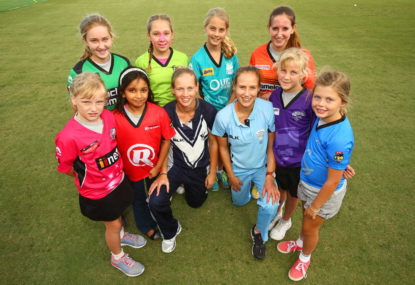The possibiliy of Jofra Archer's career coming to an early end will rob cricket of a bowler with so much talent
While a premature retirement isn’t the solution, he or England want, he may be forced into it if he can’t maintain a long run of matches.

Richie Benaud AKA Billy Birmingham AKA The Twelfth Man AKA MCG Hammer rapped poignantly in 1992, “If you don’t like cricket, I can tell it is a real bummer/
That’s because cricket is the number one game in town!”
And so it is again too.
The number of people playing cricket in Australia has more than doubled in the last seven years, from a touch over 600,000 in 2008-09 to just over 1.3 million in 2015-16.
This puts it ahead of football and AFL for participation, with around 1.2 million each.
The Big Bash is the seventh-most attended sports league (by average attendance) in the world – although the AFL is still number four. Over a million people tune in to watch it on average.
And the Big Bash is definitely one of the keys to cricket’s renaissance.
Free-to-air TV coverage, an exciting format jam-packed into just a few weeks, tickets cheap enough that you can take the whole family along, time tabling to make it possible to get to, enough teams for some cross-town rivalry without diluting the supporter pool; these are all factors that have all made the BBL the stunning success that it is.
And T20 is likely behind the big increase in participation rates as well.
One of the big booms has come from the Milo T20 Blast. A game designed to be fun and engaging for young people, who are spoilt for choice when it comes to sport and entertainment.
Combine this with the saturation coverage on television of a bright and exciting game during the summer, and why wouldn’t kids want to get involved? There’s more hometown heroes to emulate, more exciting merch to parade around in, more big-action moments to pretend to be replicating in the backyard with your mates.
But T20 is only one of the stumps in Cricket Australia’s full wicket approach. Australian cricket had previously been called “pale, stale, and male”, and indeed it was. I’m currently undertaking major research project looking at the history of Australian cricket and that is the ever-present theme.
John Howard eulogised Don Bradman, saying, “In many ways he was the most remarkable figure that Australia has produced in the last 100 years.”
But in The Australian Deborah Jones responded, “Donald Bradman’s passing has no personal resonance… For women of a certain age, Bradman is an emblem of the times when men’s business was always more important than women’s business.”
As Brett Hutchins put it at Bradman’s death, “It was predominantly white males mourning a dead white male.”
BBL has taken away the stale.
Enter the WBBL.
I had the pleasure of calling several WBBL games last season with Whiteline Wireless. No, the quality of play was not up to the standard we’ve come to expect from the men (although it was probably as good as what we recently witnessed in Sri Lanka), but the games were largely not played by professional athletes.
Player payments for the Southern Stars were close to doubled this year, along with big increases in the WBBL and state competitions. And while it’s still not enough to ensure that they can all focus purely on cricket, for the top players being a well-paid full-time athlete is now a viable option.
The WBBL’s average attendance of 7032 means it falls just short of the WNBA’s 7183 to be the world’s most popular female sports league. Women now make up a quarter of the registered players. With these figures I’m sure that increased endorsements are only just a matter of time.
So the tide is turning on the male.
That just leaves the pale. Around 90 per cent of Australia’s population identifies as Anglo-Celtic or ‘Australian’ (which is generally assumed to be Anglo-Celtic).
Indigenous participation is up 40 per cent to just under 37,000, or around 2.8 per cent.
Cricket Australia stats list ‘multicultural participation’ (let’s just take away the labels and say ‘not Anglo-Celtic’) at just shy of 190,000, or around 14 per cent.
So at a participation level, Cricket Australia has done great things in engaging these communities, including sending the first all Indigenous women’s team on tour to India earlier this year. All that’s left now is to support these young players through to elite level so we can have some more Indigenous players to join Jason Gillespie and Faith Thomas as Test cricketers.
Cricket still has a way to go to shake the pale, stale, and male tag. But these figures show it’s on the right track, and that inclusivity means success for everyone.
There’s a lesson in that for all of us.